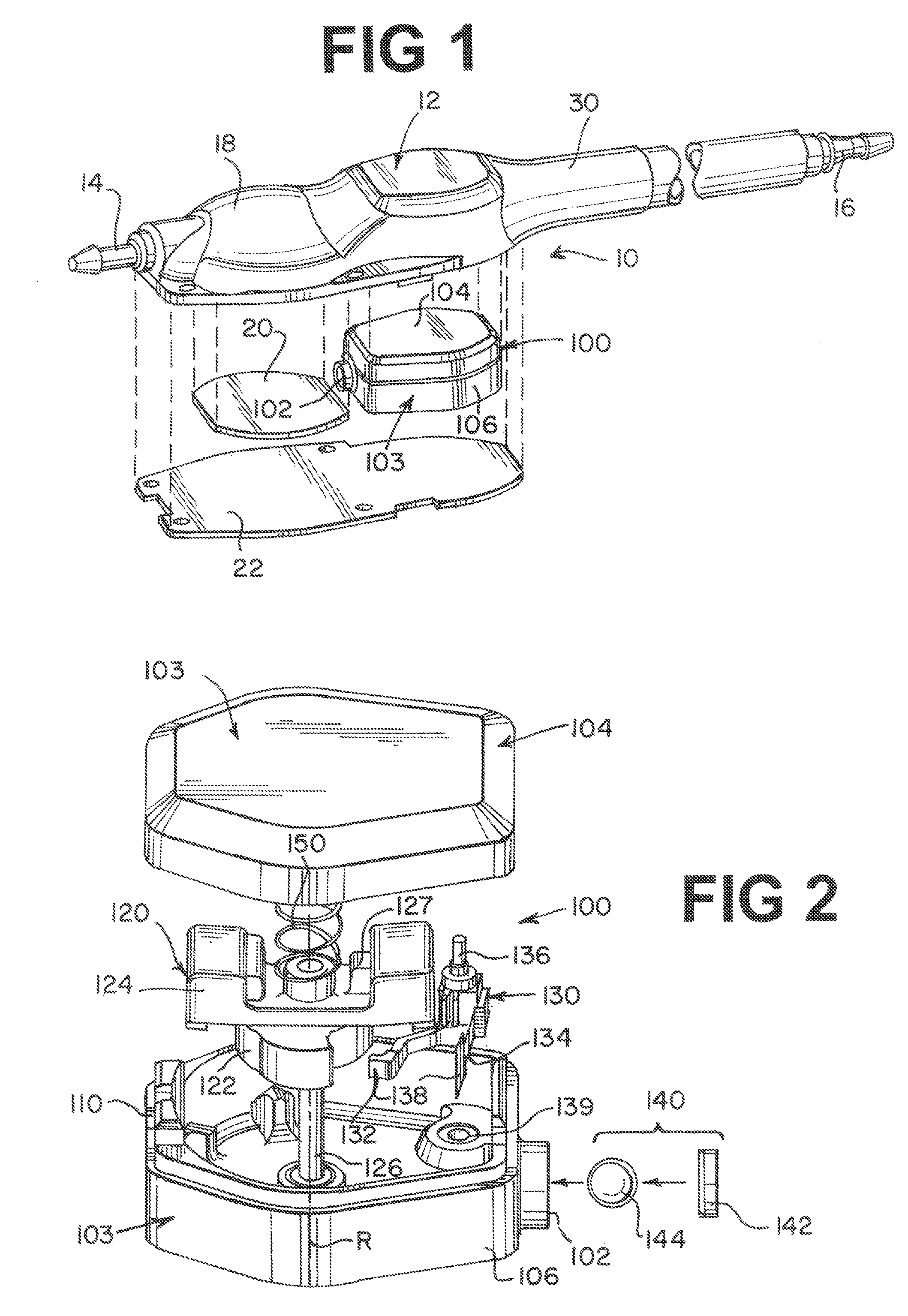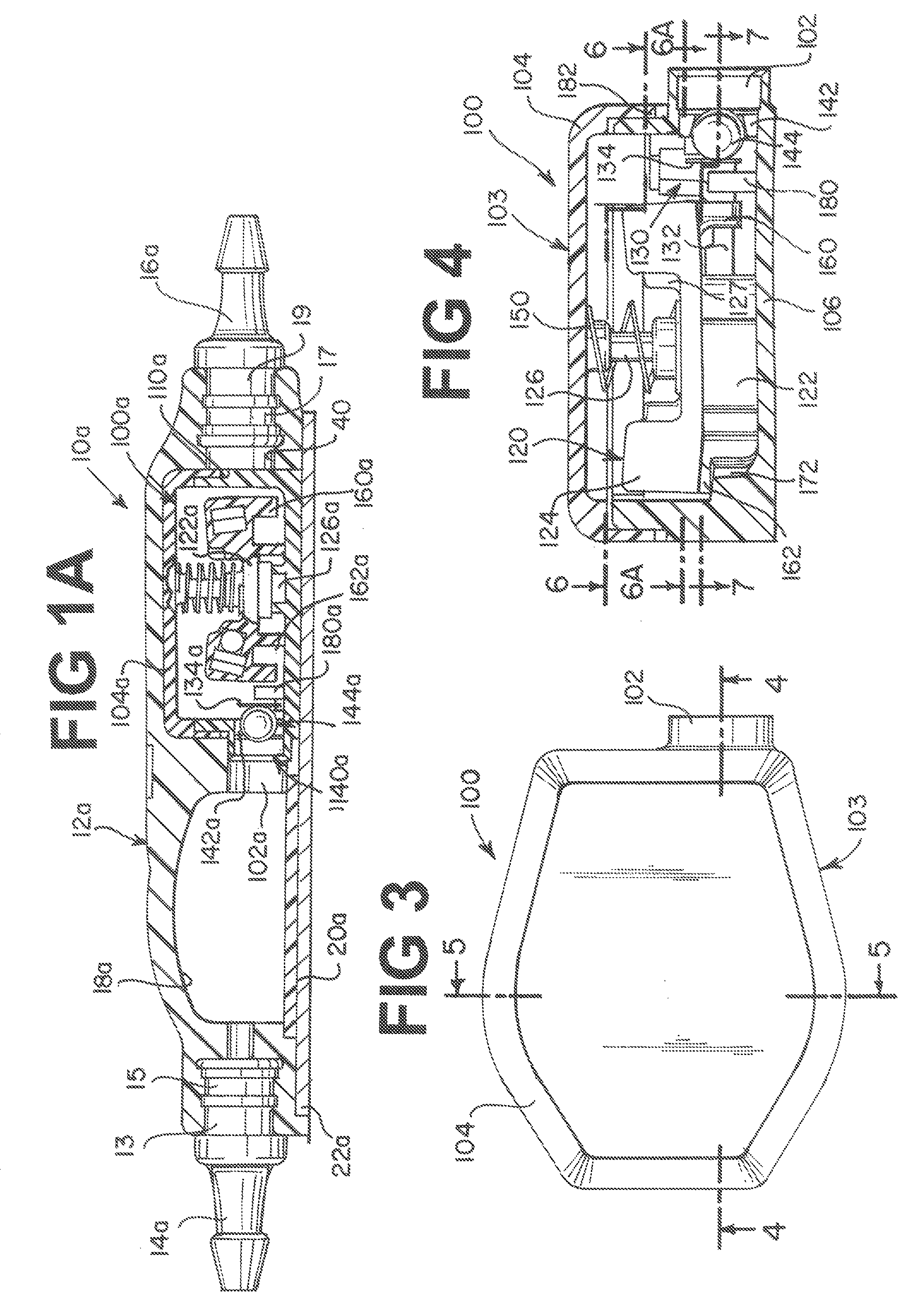Implantable adjustable valve
a technology of adjustable valves and valves, which is applied in the direction of valve operating means/releasing devices, functional valve types, wound drains, etc., can solve the problems of inconvenient use, and inability to adjust the valve, etc., to achieve the effect of improving the resistance of the valve to unintentional setting changes, and improving the safety of patients
- Summary
- Abstract
- Description
- Claims
- Application Information
AI Technical Summary
Benefits of technology
Problems solved by technology
Method used
Image
Examples
Embodiment Construction
[0062]One construction of an adjustable valve unit according to the present invention has a rotor disposed at a first location in a casing. The rotor defines a plurality of arcuate, radially flat cam surfaces. Each cam surface occupies an arc about the axis of rotation of the rotor. A spring arm unit disposed at a second location in the casing has a substantially rigid cam follower arm in slidable contact with the arcuate cam surfaces of the rotor and has a resilient spring element applying a closing effect, such as a closing force, to a movable valve member, such as a ball, against a seat to establish a pressure setting for the valve unit. Other performance settings such as flow control are achieved in other constructions, such as described in relation to FIGS. 28 and 29 below. Preferably, the radially flat cam surfaces are positioned about the rotor in a successive arrangement such that a radial distance from the axis of rotation for each successive cam surface is larger than the ...
PUM
 Login to View More
Login to View More Abstract
Description
Claims
Application Information
 Login to View More
Login to View More - R&D
- Intellectual Property
- Life Sciences
- Materials
- Tech Scout
- Unparalleled Data Quality
- Higher Quality Content
- 60% Fewer Hallucinations
Browse by: Latest US Patents, China's latest patents, Technical Efficacy Thesaurus, Application Domain, Technology Topic, Popular Technical Reports.
© 2025 PatSnap. All rights reserved.Legal|Privacy policy|Modern Slavery Act Transparency Statement|Sitemap|About US| Contact US: help@patsnap.com



